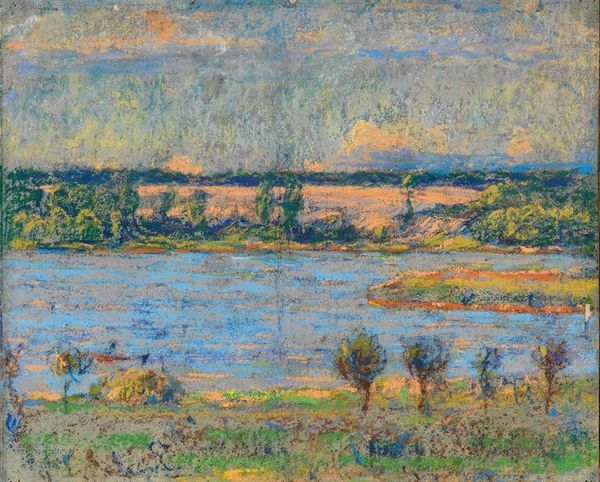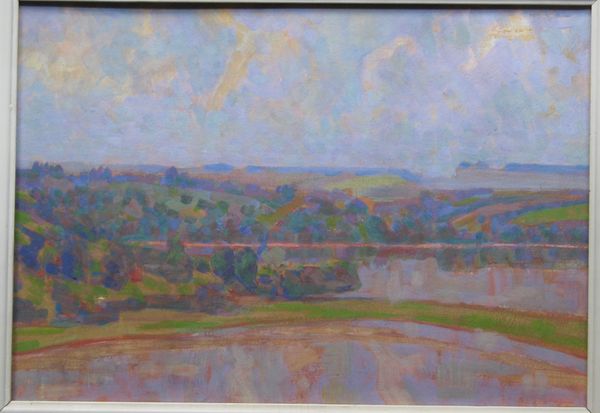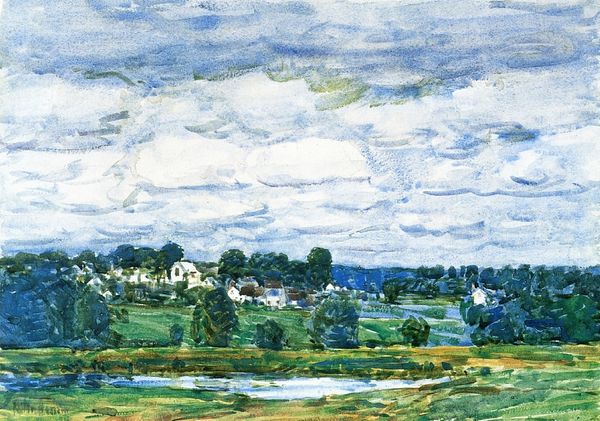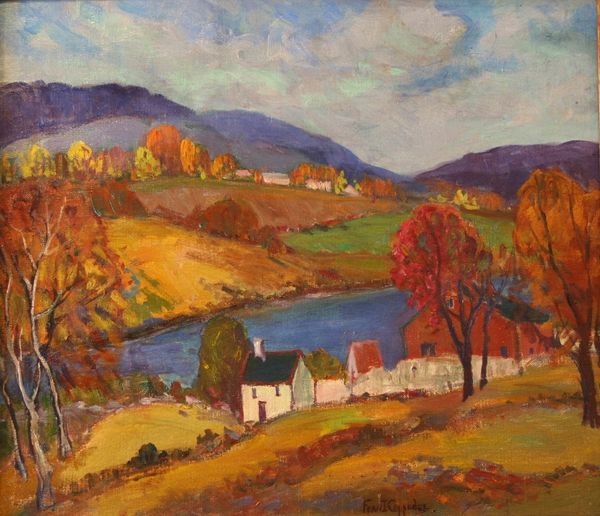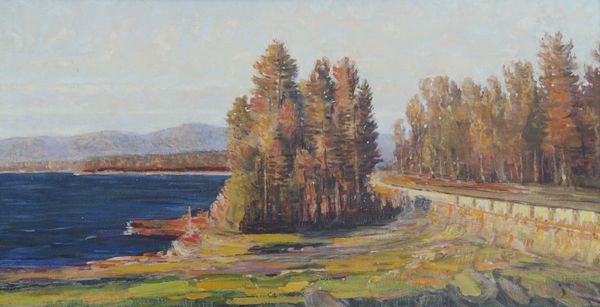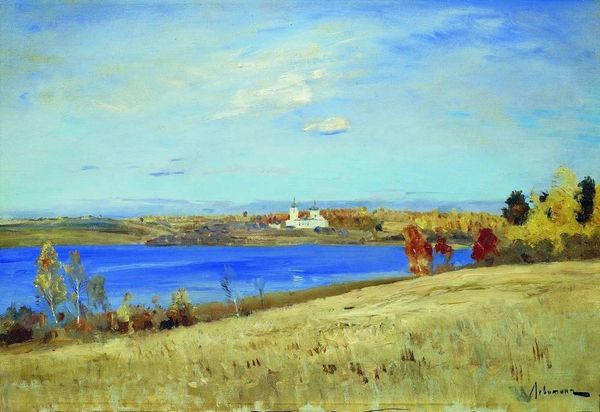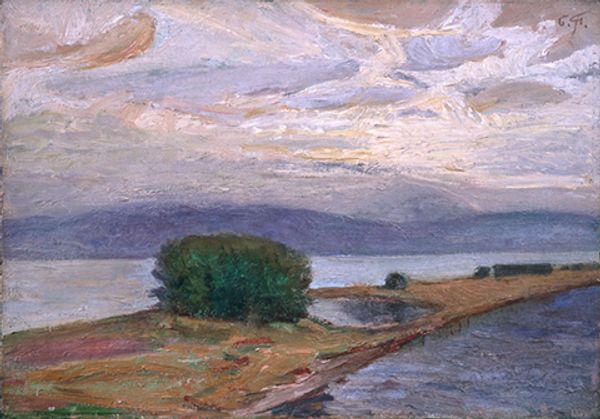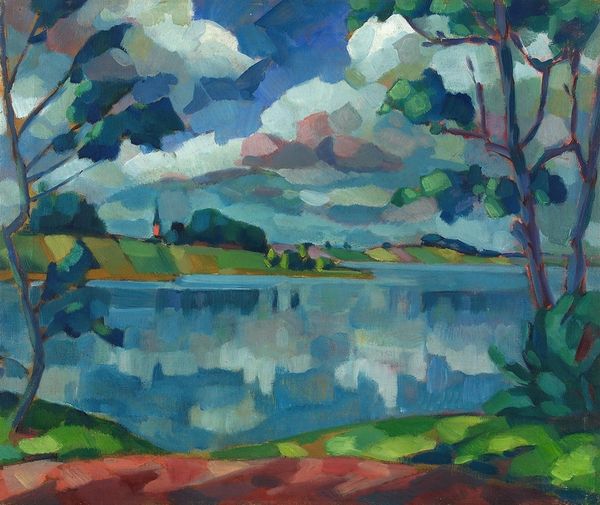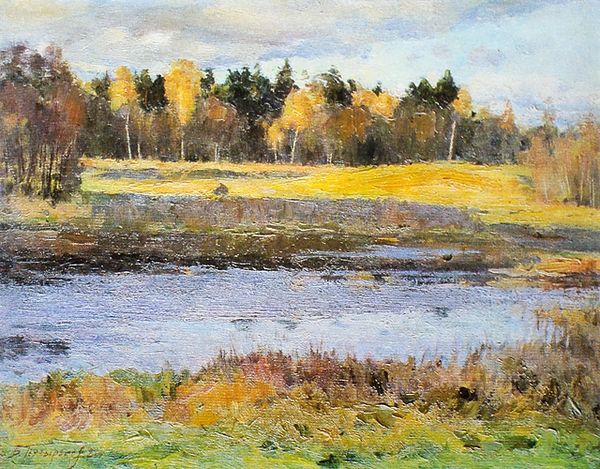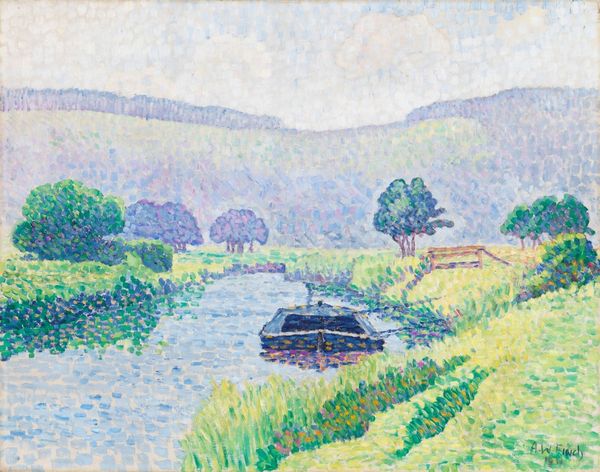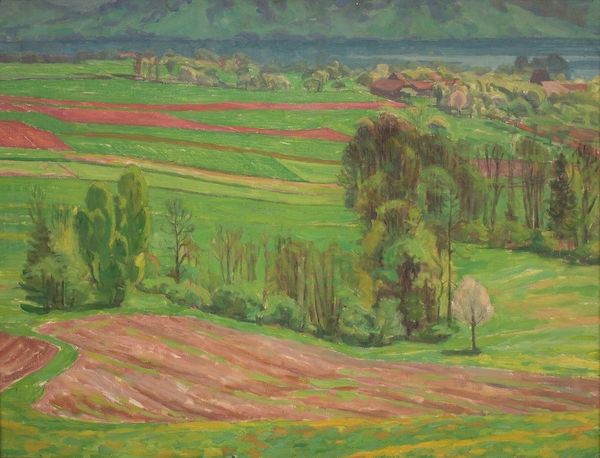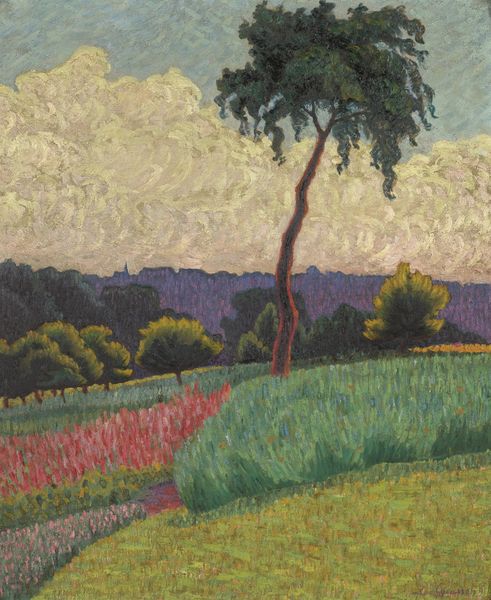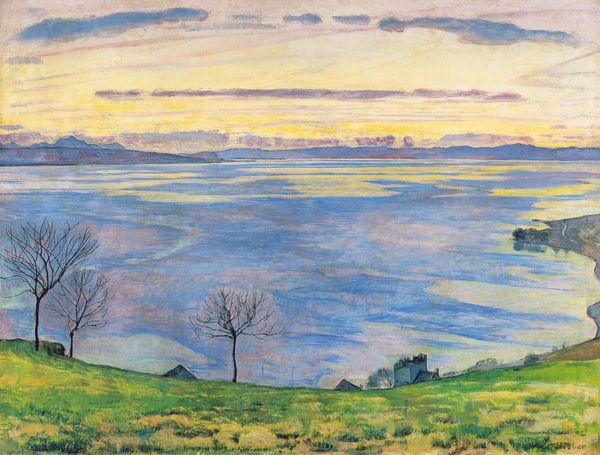
Copyright: Public domain
Curator: Here we have Alfred William Finch's "Landscape from Padasjoki," painted in 1918. It's an oil on canvas. Editor: My immediate impression is one of intense labour and quiet beauty living side-by-side. It’s idyllic but with a certain heaviness in the scene – in the posture of those workers in the fields and even the thickness of the clouds. Curator: Indeed, Finch, deeply influenced by Post-Impressionism, employed a very particular technique to portray that balance. He carefully built up the paint surface with short, deliberate strokes, achieving a textured materiality. Consider how that technique might affect representations of labor. Editor: Absolutely. Look at the figures; the laborers, are not individualized, really—almost anonymous. Placed at the bottom corner of the landscape and seemingly connected to their field. It brings forth the concept of exploitation within the production of resources, the social hierarchies present during a moment in time such as the creation of the land and work available and the materials that surround us. Curator: And the way the artist used pigment is fascinating. There's a clear departure from the classical tradition of blending. See, instead, how each stroke seems to stand alone yet contributes to the overall image. Finch foregrounds not only the scene but the actual construction of that scene through layers of labor, in a sense, rendering visible the hidden aspects of painting itself. Editor: Precisely! Considering it was painted during 1918, as well, after the first world war and amidst nationalistic fervour, does it perhaps suggest the deep connections between the people, their labor, and the land from which they seek a new life post-war? Curator: I agree, that perspective definitely holds. The emphasis on the physical nature of paint, on its application and arrangement, points toward a more profound understanding of the artwork as the product of concentrated artistic effort within the field of natural resources. Editor: Well, seeing how the physical work of painting and physical field labor are blended allows us to see this vista as more than just a pretty picture; we see labour as part of the cultural context within its landscape and the artist’s means of expressing it. Curator: A wonderful observation, bringing light to the artistic labor, it reminds us that art too is produced via material means and with visible social roots, such as the influence of political happenings of the time like you shared before.
Comments
No comments
Be the first to comment and join the conversation on the ultimate creative platform.
